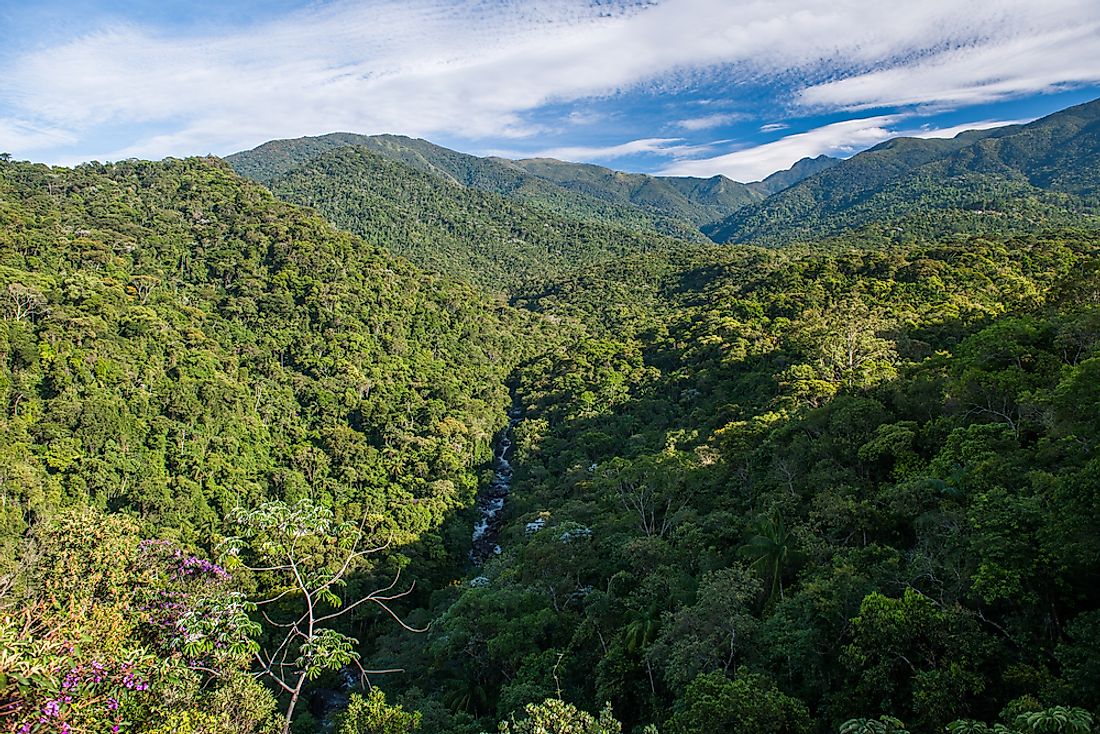The Biodiversity Hotspot of the Atlantic Forest

Where Is The Atlantic Forest?
The Atlantic Forest in South America stretches along the Atlantic coast of the country from the state of Rio Grande do Norte to the state of Rio Grande do Sul. The forests also stretch inland into Argentina’s Misiones Province and Paraguay. The forests here feature a high diversity of species and high levels of endemism. Currently, the Atlantic Forest has experienced large-scale deforestation. Many species of plants and animals living in the Atlantic Forest biome might soon become extinct.
Biodiversity Of The Atlantic Forest
Despite large areas of the Atlantic Forest being degraded and lost, a lush biodiversity and a rich collection of endemic species are still the main features of the remaining forest area. About 40% of the vascular plants and 60% of the vertebrate species living here are endemic to the region. 92% of the amphibians of the Atlantic Forest are found nowhere else in the world. 140 species featuring in Brazil’s list of threatened species are residents of the Atlantic Forest. In Argentina’s Atlantic Forest region, 22 species are listed as threatened while in Paraguay’s part of the forest, 35 species are listed as threatened.
Sadly, in the past 400 years, nearly 250 species in the region have ceased to exist due to human activities in the region. The biodiversity is so rich that in certain locations within the biome, a one-hectare patch of land hosts almost 450 species of trees. New species are also being continuously discovered here. Between 1990 and 2006, nearly a 1,000 new species of flowering plants were discovered here.
The Impact Of Human Activities On The Atlantic Forest
The Atlantic Forest was the first native environment encountered by the first Europeans who arrived in Brazil. At the time of this contact, the forests were estimated to occupy an area of 1,000,000 to 1,500,000 square km. Now, only 15% of this area remains forested.
The growth of modern human settlements and their exploitation of forest resources for economic gains has led to the destruction of vast tracts of pristine forested land. Human-modified landscapes now occupy 85% of the original forest habitat. This includes cities, towns, pastures and croplands. Coffee, tea, tobacco, biofuel crops, and sugar-cane are the main crops cultivated here. The worst loss of forest land has been due to animal agriculture where forests have been cleared to allow livestock land for grazing.
The wildlife of the region has also been extensively hunted for various purposes. 10 to 80% of the canopy cover of the forest is removed due to logging activities. Fire due to irresponsible human activity is also quite common in the region.
Ongoing Conservation Efforts To Save The Species Of The Atlantic Forest
Several nongovernmental organizations are currently dedicated to working in Brazil to solve the crisis facing the Atlantic Forest region of the country. Local organizations and individuals working to save the forests are being provided support and professional assistance by international organizations like BirdLife International, WWF, and others. Wildlife Corridors are being built in the region to maintain the biodiversity of the Atlantic Forest. A $44 million USD has been granted by World Bank to establish the Central Biodiversity Corridor. Similar projects are being planned and executed in the region.











